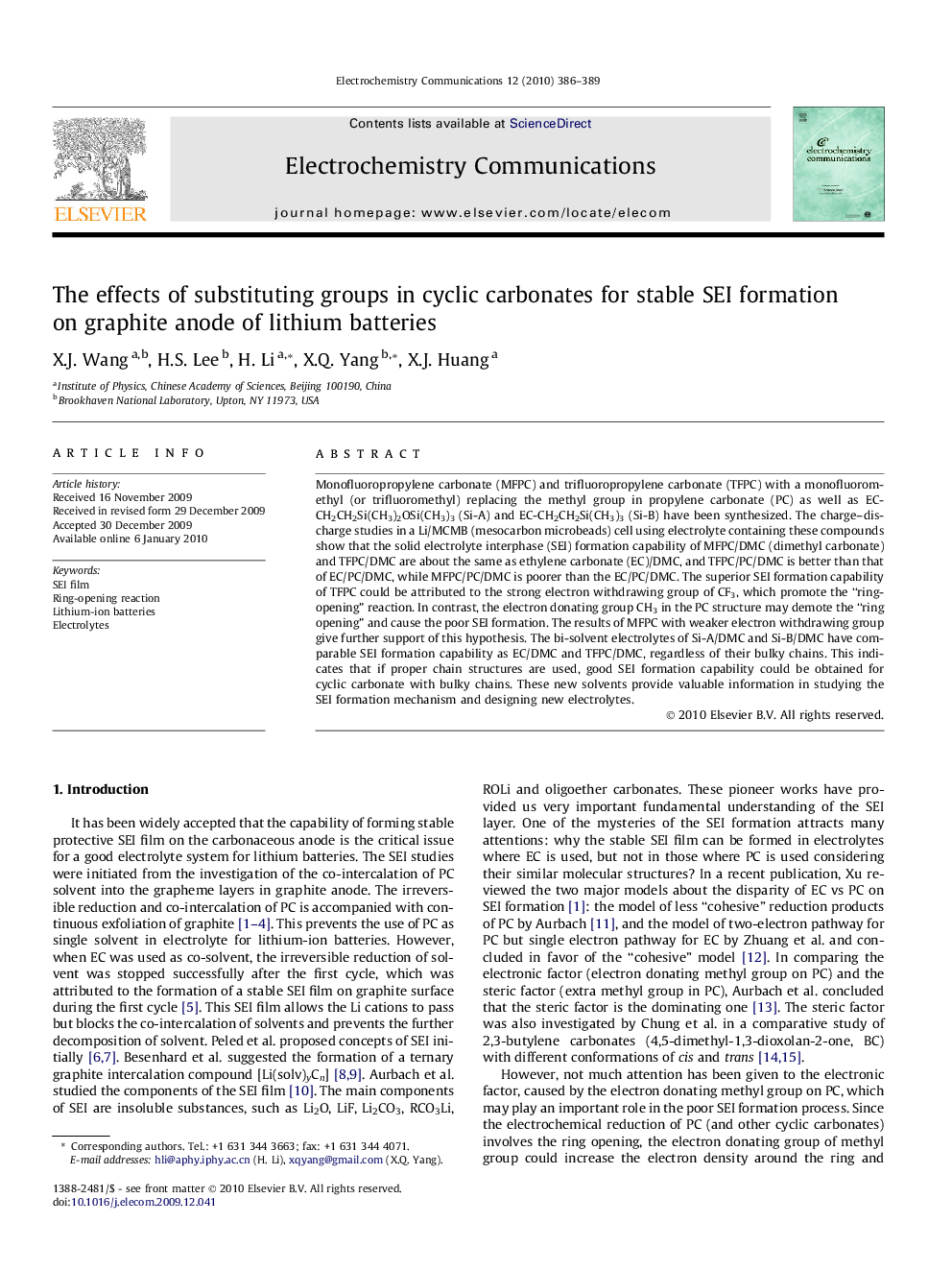| Article ID | Journal | Published Year | Pages | File Type |
|---|---|---|---|---|
| 180828 | Electrochemistry Communications | 2010 | 4 Pages |
Monofluoropropylene carbonate (MFPC) and trifluoropropylene carbonate (TFPC) with a monofluoromethyl (or trifluoromethyl) replacing the methyl group in propylene carbonate (PC) as well as EC-CH2CH2Si(CH3)2OSi(CH3)3 (Si-A) and EC-CH2CH2Si(CH3)3 (Si-B) have been synthesized. The charge–discharge studies in a Li/MCMB (mesocarbon microbeads) cell using electrolyte containing these compounds show that the solid electrolyte interphase (SEI) formation capability of MFPC/DMC (dimethyl carbonate) and TFPC/DMC are about the same as ethylene carbonate (EC)/DMC, and TFPC/PC/DMC is better than that of EC/PC/DMC, while MFPC/PC/DMC is poorer than the EC/PC/DMC. The superior SEI formation capability of TFPC could be attributed to the strong electron withdrawing group of CF3, which promote the “ring-opening” reaction. In contrast, the electron donating group CH3 in the PC structure may demote the “ring opening” and cause the poor SEI formation. The results of MFPC with weaker electron withdrawing group give further support of this hypothesis. The bi-solvent electrolytes of Si-A/DMC and Si-B/DMC have comparable SEI formation capability as EC/DMC and TFPC/DMC, regardless of their bulky chains. This indicates that if proper chain structures are used, good SEI formation capability could be obtained for cyclic carbonate with bulky chains. These new solvents provide valuable information in studying the SEI formation mechanism and designing new electrolytes.
